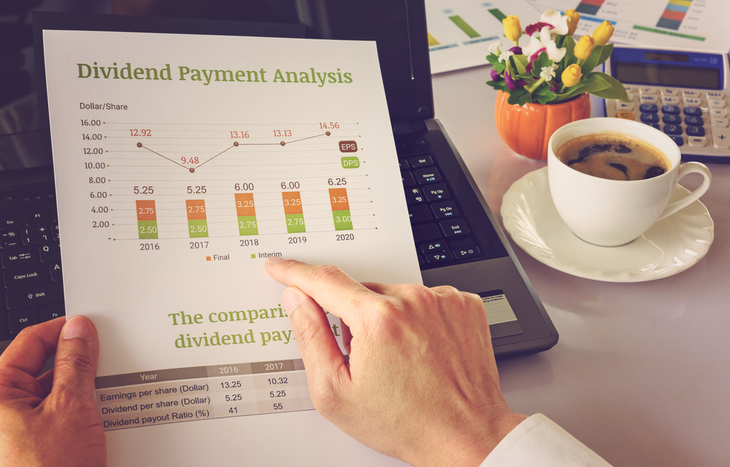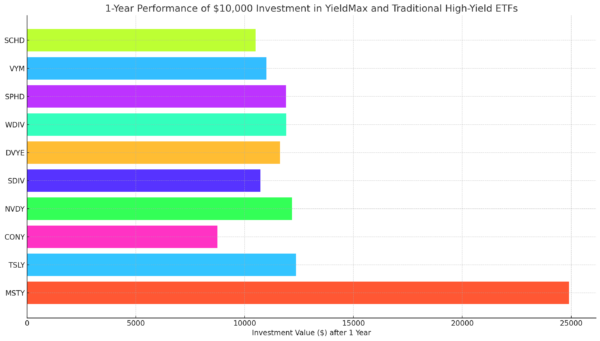How a Dividend Reinvestment Plan (DRIP) Works and Compounds Wealth
A dividend reinvestment plan (DRIP) is an automated investing program. It’s a powerful tool to help you build wealth and save for retirement.
A dividend is usually a cash reward from a company given to shareholders on a per-share basis. With a DRIP, rather than receiving the money, you reinvest the dividends to get more shares in the company.
DRIPs can allow you to compound your gains and reduce risk with dollar-cost averaging. Instead of sitting idly in cash, your money can grow exponentially over time.

How a Dividend Reinvestment Plan (DRIP) Works
Finding stable dividend-paying companies is key to maximizing your returns. And there are several factors to consider before choosing a company.
Companies usually pay dividends to investors quarterly. And DRIPs give shareholders the option to reinvest the dividend into more shares. This happens automatically when dividends are paid.
Another upside of DRIPs is the ability to buy fractional shares. You can buy fractional shares if the reinvested dividends aren’t enough to buy a full share. Because of this, you put every dollar reinvested to use.
DRIPs work on a dollar-cost-averaging basis. This involves regularly putting a fixed amount of money into an investment. By investing at regular intervals, you avoid trying to time the market. And this is a good thing because trying to time the market usually lowers long-term returns.
When you invest regular payments, you’ll buy shares as the price of a stock moves up or down. In return, you can increase your chances of paying a lower cost on average over time.
To get a better understanding of how DRIPs work, check out our dividend reinvestment calculator here at Investment U. It’s free and shows you how your portfolio can grow.
How to Reinvest Dividends
There are several ways to reinvest your dividends in a company.
Types of DRIPs
Company-Operated DRIP
Some companies operate direct dividend reinvestment plans. In these cases, the companies have departments that handle the program. It’s a process that makes reinvesting easy for shareholders.
Third Party-Operated DRIP
A company may outsource a transfer agent to manage its DRIP program. DRIP programs can be costly and time-consuming for a company. These providers can make it easier to handle the plans and financial regulations around them.
Broker-Operated DRIP
If a company doesn’t offer a DRIP, a broker can reinvest your dividends for you. A broker will buy the shares on the open market. Brokers will usually charge little to no commission on DRIP stock purchases.
Benefits of DRIPs
Benefits for the Investor
- Dividend reinvestment plans give investors a way to get more shares without added fees. Shareholders usually aren’t charged commission or added brokerage costs.
- Some company operated DRIP programs offer shares at a discount of 1% to 10% lower than the market price.
- You can reinvest every dollar of your dividend with fractional shares.
Benefits for the Company
- A company with a DRIP program receives money from shareholders. It can then invest those funds in the business.
- The power of compounding in company-operated DRIP programs typically attracts long-term investors. As a result, they’re less likely to sell their shares when the stock market declines.
Disadvantages of DRIPs
An investor can’t readily sell shares if the market changes. Because shares from DRIPs usually aren’t bought on the open market, you have to approach the company to sell shares. Some companies may have sales requirements through writing, telephone or online.
As a company issues new shares, DRIPs can also dilute the ownership of other investors. As a result, other investors would have to buy more shares to maintain the same level of ownership in the company.
Because a DRIP automatically invests, you don’t have control over the timing or the buy price.
DRIPs don’t provide significant return for short-term investors. Reinvesting dividends builds wealth through the power of compounding. This is a long-term strategy that takes patience.
Even though you don’t receive the dividend, they’re still subject to taxes. The dividend is considered income and is taxable. But there’s a catch…
If your investment was made through a retirement account, you can defer taxation on your dividends until you withdraw from the account. By investing your dividends in a qualified retirement account, you can grow your wealth tax-free over time.
The Power of Compounding
Income Expert Marc Lichtenfeld explains the power of compounding with DRIP investing below…
If you own 100 shares of Company X, currently trading at $40 per share, and you receive $100 in dividends ($1 per share), the $100 automatically buys 2.5 shares of stock… increasing your total count to 102.5 shares.
Next quarter, if the dividend stays the same, you’ll receive another $102.50, which will automatically purchase even more shares… and so on… and so on.
The magic of compounding starts off small… But with enough time, it generates a huge amount of money. It’s like a train that pulls out of the station slowly, then gains momentum and races down the track.
Compounding returns are a big advantage of a DRIP. When you reinvest your dividends, they go toward buying new shares. You begin earning dividends on the new shares, and those turn into more shares.
Over time, this process continues. Your investment in the company will increase as your dividend checks increase. Each new share bought through the DRIP pays its own dividend. Reinvesting lets you exponentially grow your portfolio without having to spend a lot of time and attention on your investments.
The power of compounding helps you boost long-term returns. After a few years, you can turn a steady DRIP into a waterfall of cash.
To learn more about investing and top income opportunities, sign up for Wealthy Retirement. It’s a free e-letter with useful investing tips and tricks straight from Marc Lichtenfeld.
About Aimee Bohn
Aimee Bohn graduated from the College of Business and Economics at Towson University. Her background in marketing research helps her uncover valuable trends. Over the past year, her primary focus has been researching IPOs and other trends.





